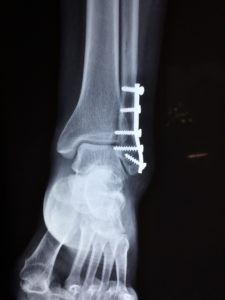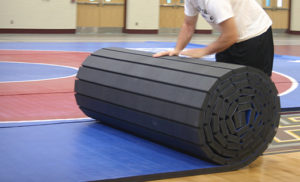Brazilian Jiu jitsu practitioners everywhere know, that training injuries can happen easily. This is for several reasons, but a poor selection of your gym’s BJJ mats shouldn’t be a common one. After all, we purchase mats for our gyms, because we want to keep our students (and ourselves) as safe as possible. Understanding factors that pertain to mat-related injuries can help keep your students actively training and your revenue stream unaffected.
Aside from injury related mat specifics, jiu jitsu is unique and jiu jitsu practitioners everywhere need to have mats that fit their specific training requirements.
Let’s take a quick dive into what types of mats are best for jiu jitsu.
BJJ Mats & Injuries

There are many types of injuries in Brazilian jiu jitsu, of course, but some of the most common mat related jiu jitsu injuries are:
- Ankle Injuries
- Knee Injuries
- Mat Burn
Ankle and knee injuries can happen when mats have a little give (enough to notice a toe or heel sinking into it) and a somewhat tight vinyl covering. This can be especially problematic if the texture of the mat has some grip to it.
A combination of the tight vinyl covering, the weighted foot, how the sunken mat helps hold the foot in position, and the type and angle of the technique being applied can cause a myriad of issues, such as:
- a twisting of the leg (causing damage to the knee or ankle).
- a rolling of the foot (causing damage to the ankle).
- a sideways outside pressure acting on the lower tibia while the foot is sunk into the mat (causing damage to the tibia and possibly the ankle).
- a sideways inside pressure acting on the lower tibia or ankle while the foot is sunk into the mat (causing the foot to roll).
It’s even possible to get the big toe momentarily caught in the excess vinyl and get a spiral fracture (requires a rotating motion and could easily become a compound fracture).
On the other hand, mats that are too hard can cause damage to knees when shooting on your training partner, as well as mat burn, especially if the mats have a rough texture.
Yet, if the mats are smooth and they have sweat on them, they will become slick. This could cause a student to slip and crash their head into their training partner’s knee (let’s face it, control is important).
So, as you can see, many of these things can be prevented by purchasing the correct mats.
To get our full breakdown on Martial Arts Mats, fill out the form:
Get the Martial Arts Mats Guide!
Choosing your mats can be a HUGE decision! Take out the guess work with our guide to choosing your mats!Mat Types
Sectional Mats – Usually come in 3’x6’ sections and can be placed together and usually has a wooden barrier around them to keep them together.
Traditional Rollout Mats – These mats are much like the traditional wrestling mats that your high-school wrestling team used. They are usually 2” of foam in a single piece.

Modern Rollout Mats – Modern rollout mats have a single piece over the top, which connect slatted pieces of padding that abut to each other once rolled out.
Puzzle Mats – These mats are 3’ square mats that interlock together on the edges and can easily be patterned by using 2 or more colors.
Foldout Mats – Fold out mats come in rectangular sections that fold up. Most fold out mats have velcro attached to connect multiple mats together.
Spring Floor Systems – If you are using sectional mats or rollout mats, you may also consider installing spring flooring systems. This takes a bit of the bite out of hard landings by making the foundation under the mat able to give a bit and transfer that force across a wider area.
To get our full breakdown on Martial Arts Mats, fill out the form:
Get the Martial Arts Mats Guide!
Choosing your mats can be a HUGE decision! Take out the guess work with our guide to choosing your mats!Ideal Mat Qualities in Brazilan Jiu Jitsu
Given the variety of circumstances and the speed and intensity of brazilian jiu jitsu training, there is no “safe mat”. Accidents happen. Nonetheless, there are mats that pose less of a threat to the widest variety of circumstances.
Many of the Gracies (and other BJJ practitioners) opt to build their own mats, which usually comprises of roll out foam and a single contiguous piece of vinyl sheeting. There is typically a bit of slack in the vinyl.
This combination does a couple of things. The padding allows the foot to sink a little, enough for balance and stability. Yet, in the event of pressure being applied, where the foot needs to scoot out, the slightly loose fabric has a better chance of shifting than it would if it were tightly stretched vinyl in a section mat, for instance.
Building your own mats may be in your wheel house, if so it may not be a bad option.
Here is a video by Rener Gracie showing the Gracie mat making process:
Additionally, here is another video showing a slightly different process:
If you are really just looking to skip the headache, you could easily purchase mats. For this we do recommend the rollout mats (either type).
Given this is a blog post, we have only begun to discuss all of the relevant data about good mat selection. Fill out the form below to get our complete guide on selecting martial arts mats:
To get our full breakdown on Martial Arts Mats, fill out the form:
Get the Martial Arts Mats Guide!
Choosing your mats can be a HUGE decision! Take out the guess work with our guide to choosing your mats!Disclaimer: Everything written herein should be taken as our opinion and should not be construed as advice. Further, we are not liable for any accidents or injury on mats purchased based on the content of this page.
